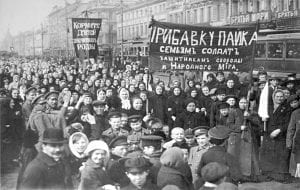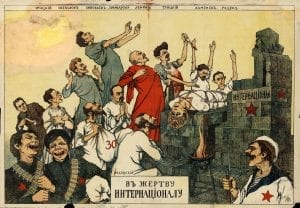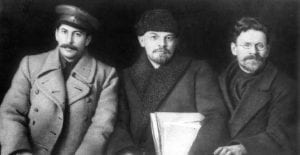10 Roaring Facts about the Russian Revolution
Russia is a nation with a tumultuous history, one that’s still ongoing – and one of the landmark moments in the country’s past is the Russian Revolution, which took place during World War I. During a period of intensive revolution against the Tsarist regime, Bolsheviks led by Vladimir Lenin took over the state and eventually forced through the Soviet Union. But, there’s more to the story than this brief overview – here are some fun facts about the Russian Revolution.
1. There was more than one Russian revolution.
Yes, believe it or not, Russia experienced not one, but two revolutions in 1917 – one in the spring, which saw the Tsar dethroned, and another in the fall, where the Bolsheviks took over with Lenin at the helm. The second of these revolutions was called the “October Revolution” – even though it took place in November – as Russia was using the Julian calendar.
2. Tsar Nicholas’ abdication brought centuries of history to an end.
Romanov Tsars had ruled over Russia since the 1600s – meaning that when Nicholas II abdicated at the height of the February Revolution, the move brought an end to three centuries of family history.
3. The October Revolution was prepared thanks to the mistakes of the February Revolution.
Lenin and his fellow Bolshevik, Leon Trotsky, were well-prepared to take over the Russian state as they’d carefully analyzed the anarchic fallout of the February revolution. Therefore, the Bolshevik takeover was particularly strategic and carefully plotted.

Protests in Petrograd during the February Revolution.
4. It’s thought that losses in war led to the revolution taking place.
Historians believe that Russians grew ever more opposed to Tsarist rule following the country’s heavy losses during the Russo-Japanese War and the events of Bloody Sunday in 1905.
5. Bolshevism was rooted in the writing of Karl Marx.
Marx, the father of Marxism and author of socialist tome “Das Kapital,” is thought to have inspired the Bolsheviks, an offshoot of Marxist ideology. Specifically, the Bolsheviks followed the idea that workers should inherit the land from the rich, thus inspiring the group to overthrow the incumbent family in charge.
6. Lenin started giving land back once the Bolsheviks took over.
One of Lenin’s first acts in charge of Russia was to take the country out of World War I, and to give back land the country had taken during the conflict. Russia gave back land to countries such as Latvia, Poland, and Estonia.
7. The Bolsheviks became the Communist Party
The term “Communist” and the ideas that come with the ideology stem from Marx’s writing and Lenin’s successful takeover of Russia. In fact, the Bolsheviks would become known as the Communist Party once in charge of the nation.
8. Despite the best intentions, Lenin’s rule corrupted.
The revolution that many Russians had demanded would eventually transfer into a dictatorship under Vladimir Lenin. While Lenin and his party promised a constitution based on socialist ideals and to give power back to the people, the figurehead and his party were installed as holding absolute power in Russia – which counteracted Marx’s original theories.

A propaganda poster portraying Lenin and Bolsheviks at the foot of a Marx statue sacrificing Russia.
9. The revolution soon gave way to civil war.
Russia’s civil war, post World War I, arose out of growing dissent against the Communist Party. In fact, it led to fighting between what were known as the White and Red Armies – the latter of which belonged to Lenin. The conflict that unfolded until 1922 would see five million people lose their lives in battle.
10. Lenin gave way to Stalin.
Lenin’s death in 1924 led to another change in leadership – and a tussle between Trotsky and Josef Stalin. Trotsky was eventually exiled in 1929, paving the way for another dictatorship – under Stalin – to reign until he, too, died in 1953.

Stalin (left), Lenin (centre) and Mikhail Kalinin (right) pictured together 1919.
FAQs about the Russian Revolution
Why did people dislike Tsar Nicholas II?
People revolted against the Tsar in 1917 largely thanks to his worsening competency as a leader and the increasing financial hardship facing working people.
What caused the Russian Revolution?
Military losses, food shortages, corruption, and economic downturn are all said to have led to the rise of the Russian Revolution.
What was Russia called during World War I?
Before the revolution took place, Russia was known as the Russian Empire and became the Union of Soviet Socialist Republics, or USSR, under Lenin.
Further reading:
https://factcity.com/tag/Russia
https://www.history.com/topics/european-history/russian-revolution
https://www.historians.org/about-aha-and-membership/aha-history-and-archives/gi-roundtable-series/pamphlets/em-46-our-russian-ally-(1945)/what-was-the-bolshevik-revolution
Do you know any interesting facts about the Russian Revolution? Share them in the comments below!
This page was last modified on November 28, 2023. Suggest an edit









